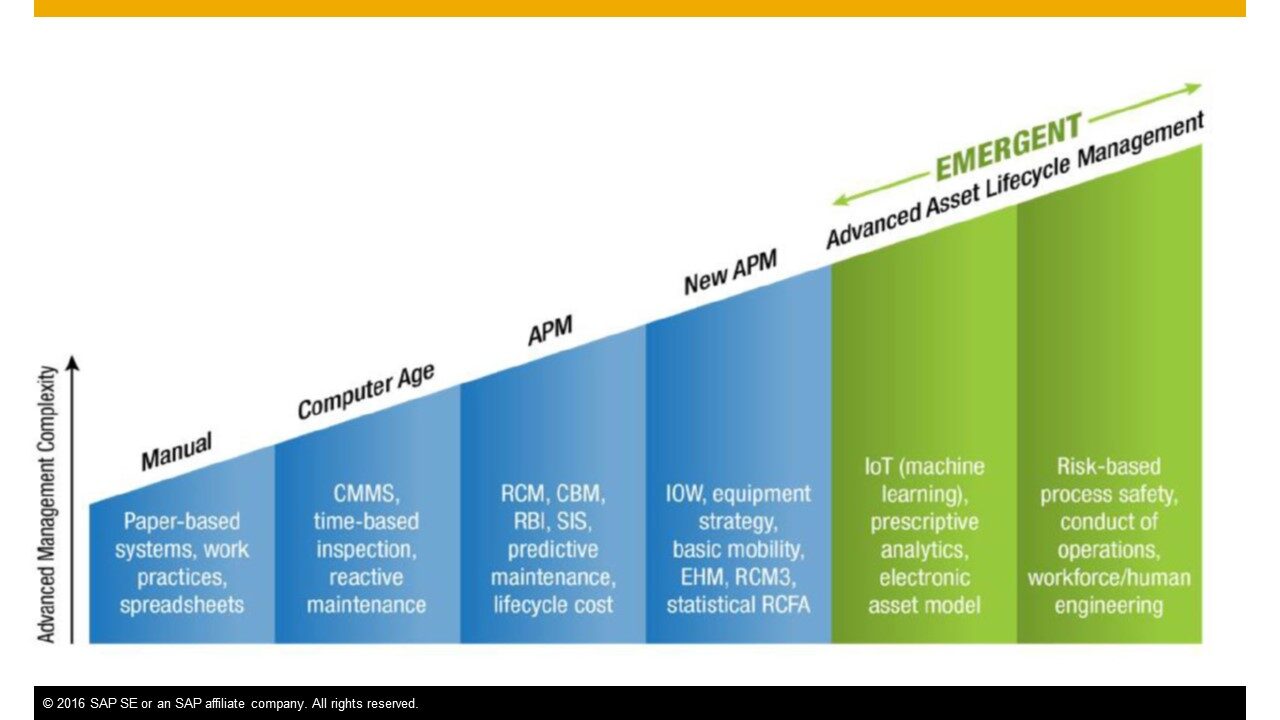What is Advanced Asset Lifecycle Management (Next Gen APM) and Why Do You Need It?
Next Gen Asset Performance Management (Next Gen APM) is shorthand for Advanced Asset Lifecycle Management. This emergent approach to asset management goes far beyond the traditional questions of maintenance, cost, safety systems and condition. Next Gen APM embeds operational intelligence to improve worker performance, and provides additional insights far beyond what traditional APM approaches deliver. Next Gen APM results in improved process safety performance, workforce competency, and decision support at the point of execution. At its core, Next Gen APM is an operational decision support platform.
5 Ways Next Generation APM differs from “Traditional APM”
- Traditional APM has huge gaps in processes, requiring manual intervention and additional cycle time. In particular, traditional APM lacks perspective on human performance and competency, process safety, and conduct of operations.
- Traditional APM doesn’t integrate Condition Assessment, Risk Based Inspection (RBI), Reliability Centered Maintenance (RCM), Process Hazard Analysis (PHA), Management of Change (MOC), and other APM concepts into a single source of truth to drive equipment strategies.
- Next Gen APM cuts costs, increases uptime, reduces defects, and improves performance.
- Next Gen APM leverages new technologies (see below) to enable APM process convergence; creating opportunities for innovation across Enterprise Asset Management (EAM), Environmental, Health and Safety (EH&S), Process Safety, Conduct of Operations, and Workforce Competency.
- Next Gen APM integrates people, processes, data, and technology into operations to give organizations a clearer overall picture, whether viewed from inside or outside of operations

Next Gen APM leverages technology to meet new requirements for compliance and operational process efficiency. Integrating key areas of information that in many organizations have existed as separate silos of data is a core benefit of the Next Gen APM approach. People, facilities and organizations can make better decisions when they are considering their assets in light of a single source of truth encompassing:
1. Asset Performance Management
2. EH&S / Process Safety / Safety and Environmental Management Systems (SEMS)
3. Operational Risk Management
4. Workforce Management / Human Performance
5. Conduct of Operations
6. Production Efficiency / Defect Elimination
Next Gen APM delivers and utilizes:
1. Mobility for driving work processes, data delivery and updates to the system of record
2. Analytics to support Condition-Based Monitoring (CBM), RCM, Predictive Maintenance, Modeling and Simulation to provide insight to workers
3. Internet of Things (IoT) / Dynamic Edge Processing to integrate real-time data from assets
4. Interoperability and simulation modeling for APM business processes
Challenges to implementing Next Gen APM occur when:
1. Facilities run equipment outside of design limits, or fail to identify process hazards.
2. Organizations only partially apply APM principles when driven by incidents, without an overall strategy.
3. Companies seek wholesale change without a limited scale pilot to prove what works.
4. Organizations attempt to justify APM solutions without a tangible measurement of a business case coupled with strategic business objectives.
The SAP® and Operational Sustainability, LLC® integrated solution for Next Gen APM improves and streamlines Operational Excellence. Together, SAP and OS improve asset performance and deliver critical operational process information directly to the point of work execution – improving worker situational awareness and decision support. Information is integrated with SAP Plant Maintenance as the system of record, capturing any changes or updates to assets as work is completed. Integration of data and records enables companies to transform operations by increasing work execution, reducing time to service, and improving overall process efficiency and uptime – leading to better utilization of people and assets.
New NetWeaver Information at SAP.com
Very Helpfull
